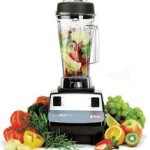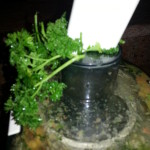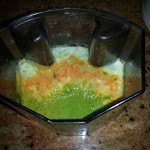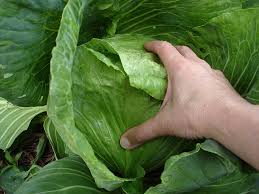alkaline
now browsing by tag
Do You Have a Healthy Alkaline Body?

Healthy blood has a pH level of 7.35 I’m sure you have heard there is a difference between an alkaline body and an acidic body? The theory is that an acidic body’s support inflammation and even cancer, while a alkaline body is a healthy body that fends of disease. Most people are clueless about the impact of food on our body’s pH level. The foods that we eat can have an acidic or alkalizing effect on our body’s pH level. So, how do you find out if you are supporting an alkaline (good) or an acidic body (bad).
One way is with PH strips that you can easily find at your local pharmacy, The human body should have a neutral pH level of about 7.0, but most people have low, or acidic, pH levels. This condition is referred to as acidosis, and it is damaging to your cells and a serious health risk in the long run. PH Test Strips enable you to quickly and easily test your pH levels using your saliva or urine. This critical health information will enable you to adjust your diet and use specific supplements to boost your pH levels to a healthy range.
Usage Instructions for pH Test Strips
For External Use Only To test saliva: Wait 2 hours after eating. Spit into a spoon. Dip the strip. Read in 15 seconds. Results: Use the color chart to determine pH level. An optimal reading is 7.0 to 7.5. This indicates a slightly alkaline body which is normal. To test urine: Do not test with the first urine of the day. Briefly place the strip into paper cup with your urine sample for 30 to 45 seconds. Shake excess fluid. Read in 15 seconds. Results: Use color chart for to determine pH level. A reading of 7.4 is normal. A reading of 6.5 acidic. Note: Urine is slightly more acidic than saliva; a normal reading is 6.5 to 7.4.
Step 1 – Buy pH Test Strips
Buy pH Test Strips. You can buy them at the health store or pharmacy or order them here CLICK
Step 2- Test your urine. You need to pee on the pH test strip. The color will change.
Compare this color with the color of the pH on the test strip box. Read the PH number.
Step 3 – Write Down the pH number.
Write down the pH number, the date and time. (you’re going to want the average for the week)
Step 5 – Daily pH Testing
You may note that every time you go the bathroom the pH number is different. When you’re healthy the number will always be around 7.3 or even up to 8 just after eating. The first urine of the day is usually the lowest.
Step 6 – How Healthy are You?
If the pH of your urine is mostly around 7.3 you’re fine. If the pH of your urine is lower, especially if it’s below 6.5 this means you don’t have sufficient alkaline reserves to buffer acids. You are short in minerals such as sodium, potassium, magnesium and calcium.
Step 7 – Get Healthy – Get Alkaline!
Add alkaline foods into your diet and eat less acid food. Eat more raw green leafy vegetables and less food high in animal protein, sugar and grains.
Eat more avocados, vegetable soup, fresh almond milk, young coconut water, wheat grass, green powder, green vegetable juices, smoothies, seaweed and super foods. Here you can view a full list of alkaline foods . Keep testing a few times a day until you always test alkaline. It’s the best motivation for eating raw food! The pH of your blood is tightly regulated by a complex system of buffers that are continuously at work to maintain a range of 7.35 to 7.45, which is slightly more alkaline than pure water. If the pH of your blood falls below 7.35, the result is a condition called acidosis, a state that leads to central nervous system depression. Severe acidosis – where blood pH falls below 7.00 – can lead to a coma and even death. (Complete list of alkaline foods here alkalifoodlist ) If the pH of your blood rises above 7.45, the result is alkalosis. Severe alkalosis can also lead to death, but through a different mechanism; alkalosis causes all of the nerves in your body to become hypersensitive and over-excitable, often resulting in muscle spasms, nervousness, and convulsions; it’s usually the convulsions that cause death in severe cases. When you ingest foods and liquids, the end products of digestion and assimilation of nutrients often results in an acid or alkaline-forming effect – the end products are sometimes called acid ash or alkaline ash. There are two main forces at work on a daily basis that can disrupt the pH of your body fluids – these forces are the acid or alkaline-forming effects of foods and liquids that you ingest, and the acids that you generate through regular metabolic activities. Fortunately, your body has three major mechanisms at work at all times to prevent these forces from shifting the pH of your blood outside of the 7.35 to 7.45 range. You can imagine these 3 major mechanisms as buffering systems to keep your pH in balance. When people encourage you to “alkalize your blood,” most of them mean that you should eat plenty of foods that have an alkaline-forming effect on your system. The reason for making this suggestion is that the vast majority of highly processed foods – like white flour products and white sugar – have an acid-forming effect on your system, and if you spend years eating a poor diet that is mainly acid-forming, you will overwork some of the buffering systems mentioned above to a point where you could create undesirable changes in your health. For example, your phosphate buffer system uses different phosphate ions in your body to neutralize strong acids and bases. About 85% of the phosphate ions that are used in your phosphate buffer system comes from calcium phosphate salts, which are structural components of your bones and teeth. If your body fluids are regularly exposed to large quantities of acid-forming foods and liquids, your body will draw upon its calcium phosphate reserves to supply your phosphate buffer system to neutralize the acid-forming effects of your diet. Over time, this may lead to structural weakness in your bones and teeth. Have you heard of osteoporosis? Drawing on your calcium phosphate reserves at a high rate can also increase the amount of calcium that is eliminated via your genito-urinary system, which is why a predominantly acid-forming diet can increase your risk of developing calcium-rich kidney stones. This is just one example of how your buffering systems can be overtaxed to a point where you experience negative health consequences. Since your buffering systems have to work all the time anyway to neutralize the acids that are formed from everyday metabolic activities, it’s in your best interest to follow a diet that doesn’t create unnecessary work for your buffering systems. That is why it is extremely important to maintain the acid alkaline balance of your body in order to stay healthy and keep yourself free of diseases and illnesses. The easiest way to keep your body in a healthy, alkaline state is to eat raw foods and juicing is the easiest way to do that. Think raw and green. By the way, I just went to the doctor’s yesterday and my blood pressure was 110/70! (I take no blood pressure pills) I give credit to juicing. Here are some great ways to juice:
The reason for making this suggestion is that the vast majority of highly processed foods – like white flour products and white sugar – have an acid-forming effect on your system, and if you spend years eating a poor diet that is mainly acid-forming, you will overwork some of the buffering systems mentioned above to a point where you could create undesirable changes in your health. For example, your phosphate buffer system uses different phosphate ions in your body to neutralize strong acids and bases. About 85% of the phosphate ions that are used in your phosphate buffer system comes from calcium phosphate salts, which are structural components of your bones and teeth. If your body fluids are regularly exposed to large quantities of acid-forming foods and liquids, your body will draw upon its calcium phosphate reserves to supply your phosphate buffer system to neutralize the acid-forming effects of your diet. Over time, this may lead to structural weakness in your bones and teeth. Have you heard of osteoporosis? Drawing on your calcium phosphate reserves at a high rate can also increase the amount of calcium that is eliminated via your genito-urinary system, which is why a predominantly acid-forming diet can increase your risk of developing calcium-rich kidney stones. This is just one example of how your buffering systems can be overtaxed to a point where you experience negative health consequences. Since your buffering systems have to work all the time anyway to neutralize the acids that are formed from everyday metabolic activities, it’s in your best interest to follow a diet that doesn’t create unnecessary work for your buffering systems. That is why it is extremely important to maintain the acid alkaline balance of your body in order to stay healthy and keep yourself free of diseases and illnesses. The easiest way to keep your body in a healthy, alkaline state is to eat raw foods and juicing is the easiest way to do that. Think raw and green. By the way, I just went to the doctor’s yesterday and my blood pressure was 110/70! (I take no blood pressure pills) I give credit to juicing. Here are some great ways to juice:
Day 12 – 30 Day Juicing Challenge



 Day 12 and feeling great! Today I added some parsley to the mix and some tatsoi. Tatsoi you say? That was a new one on me. I bought another Organic Girl box of greens and noticed that in the ingredients it reads:
Day 12 and feeling great! Today I added some parsley to the mix and some tatsoi. Tatsoi you say? That was a new one on me. I bought another Organic Girl box of greens and noticed that in the ingredients it reads:
Tangy red and green chard, hearty tat soi, peppery arugula and mild spinach. I looked up tatsoi (according to the Internet it is spelled tatsoi and not tat soi) and it is the new spinach.*
My recipe today consisted of:
- Mixed greens
- Parsley
- Orange
- Lemon
- Apple
- Celery
- Carrots
- Slice of ginger
Yesterday I picked up some turmeric supplement as it has some anti-inflammation properties. I am working on getting inflammation down in my body. I had a CRP (C-reactive protein) test a few years ago and it was very high, showing inflammation throughout my body raising my chances for heart attack and cancer. Turmeric is important for an alkaline body which is a healthy body.
The medical community has established that an alkaline diet rich in plant foods is key to longevity, but maintaining an alkaline diet is increasingly difficult in modern western culture. Complex alkalizing minerals are contained in abundance in vegetables and a selection of fruits, yet convenience foods, soda, and excess proteins have replaced them. A whole cascade of health issues and degenerative disorders can be traced back to the excess acid caused by our changing habits. Bone loss, acidosis, gut issues, candida, cardiovascular concerns, inflammation, and accelerated aging are all connected to this phenomenon. Many doctors believe that an overly acidic system is a factor in cancer as well.
The good news is that we can do something about it; we can reverse the process and heal our bodies from a number of ailments in a matter of months. This is not a quick fix, and is a lifestyle commitment that requires some dedication. The following steps should help you on your way.
1. Increase your consumption of vegetables and fruits to 9 servings daily. Of the two, veggies are most important for bone building, and should include plenty of onions (these contain superior bone-building compounds), garlic, asparagus, kale, bok choy, endive, broccoli, cucumber, cabbage, collard greens, squash, sprouted seeds, sea vegetables, cress, leafy greens, and more. Wild edibles and grasses are also beneficial.
2. Eat root veggies and tubers: beets, carrots, yams, turnip, rutabaga, parsnip, radish, and burdock.
3. Eat fruits in moderation: avocados, tomatoes, grapefruit, limes, lemons, dried figs, watermelon, coconut, and ripe bananas are all beneficial. Dried prune plums are not alkaline but have a distinct benefit for bones and are therefore included on this list.
4. Eat grains in moderation, and concentrate on quinoa, millet, sprouted bread, and buckwheat. (Increase roots and tubers).
5. Reduce animal protein. Meat is highly acidic and should be consumed moderately or not at all. Choose fish and lamb over beef or chicken. Small amounts of goat or sheep milk may be tolerable.
6. Use olive, sesame, pumpkin, coconut, or flax oil.
7. Amongst the legumes, eat lima beans, white beans, and lentils. Fermented soy products such as tempeh or miso are good.
8. Nuts and Seeds: pumpkin, sesame and almond are best bets, along with fennel and cumin.
9. Increase your water consumption. Decrease or eliminate soda, coffee, processed juices, sports drinks, and alcohol.
10. Use plenty of herbs and spices in your cooking. Cinnamon, ginger, cardamom, curries, cayenne and all the green herbs are wonderful not just for flavor but to help our bodies detoxify. (source About.com)
Day 12 done. Check!
*
Tatsoi (Brassica narinosa or Brassica rapa var. rosularis) (in Chinese: 塌棵菜, 瓢儿菜, 乌塌菜, or 塌古菜; and, inJapanese: タアサイ or 塌菜), also called Spinach mustard, Spoon mustard, or Rosette bok choy, is an Asianvariety of Brassica rapa grown for greens. This plant has become popular in North American cuisine as well, and is now grown throughout the world.
The plant has dark green spoon-shaped leaves which form a thick rosette. It has a soft creamy texture and has a subtle yet distinctive flavour.
It can be grown to harvestable size in 45–50 days, and can withstand temperatures down to –10°C (15°F). Tatsoi can be harvested even from under the snow.



 D5 Creation
D5 Creation